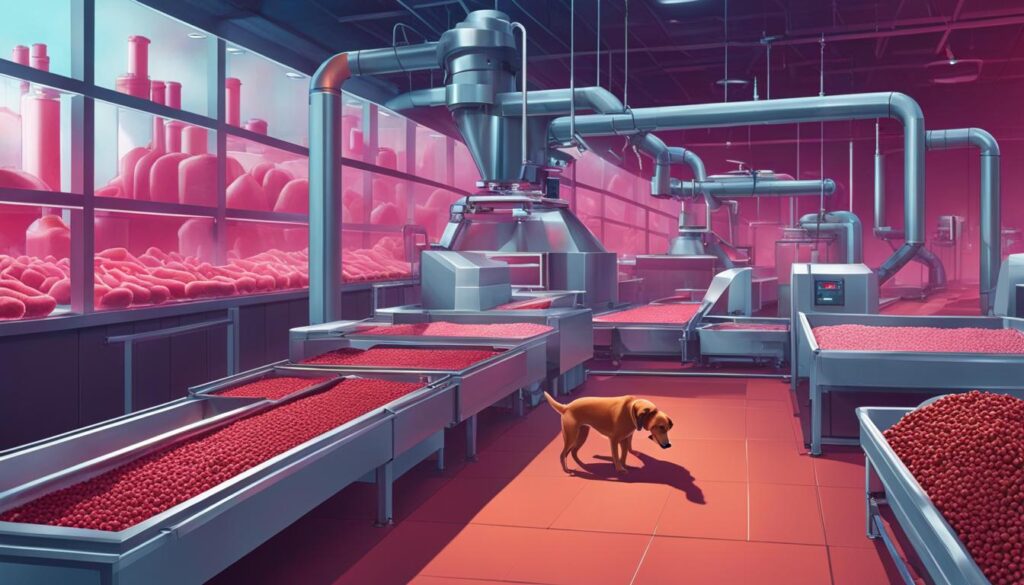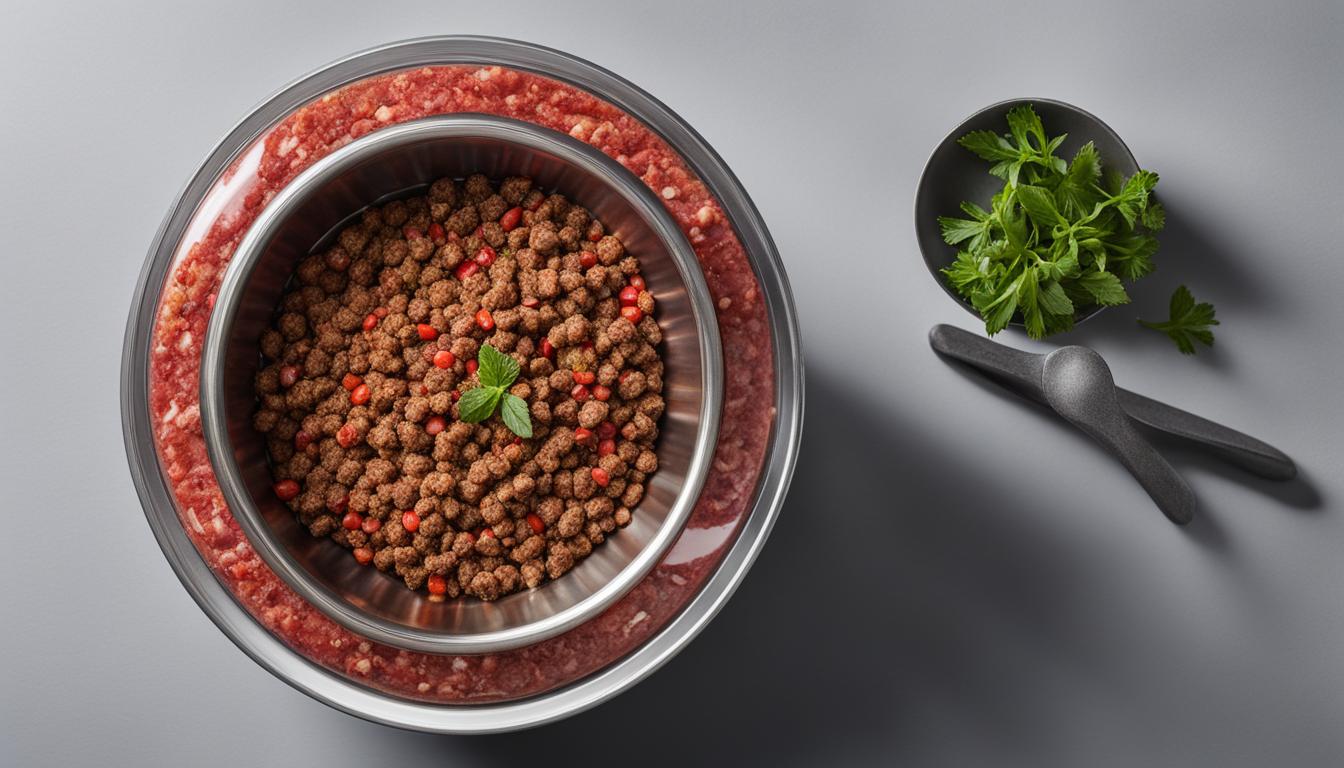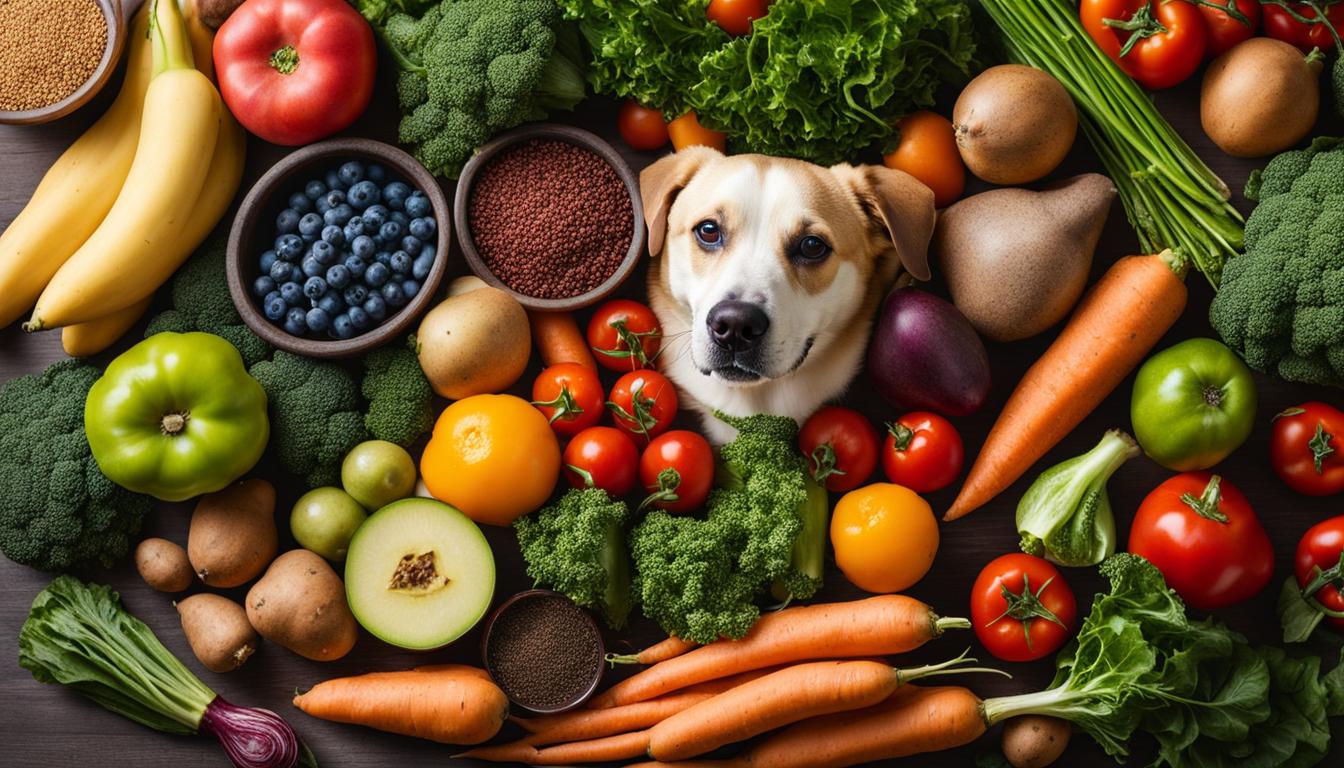Pet owners are increasingly seeking ethical and sustainable alternatives to conventional animal agriculture, and the world of pet food is no exception. Enter cultured meat, also known as lab-grown meat or cell-based meat – a groundbreaking solution that offers high-quality protein for dogs without the environmental impact of traditional meat production.
According to a recent survey, a staggering 81.4% of pet owners expressed a willingness to feed their furry companions this innovative cultivated meat. Interestingly, while vegans and vegetarians may be less inclined to consume cultured meat themselves, they are more open to feeding it to their pets, highlighting the potential of this option across different dietary preferences.
When it comes to consumer perceptions, safety and nutritional completeness are key factors. Pet owners want to ensure that their four-legged friends receive optimal nutrition from their diets. Cultured meat meets these requirements, providing dogs with essential proteins, amino acids, and other nutrients necessary for their health, on par with traditional meat sources.
Key Takeaways:
- Cultured meat offers a sustainable and ethical alternative for pet food.
- The majority of pet owners are willing to feed cultured meat to their dogs.
- Vegans and vegetarians are more open to feeding cultured meat to their pets.
- Cultured meat provides dogs with essential proteins and nutrients.
- Safety and nutritional completeness are important considerations for pet owners.
The Environmental and Ethical Benefits of Cultured Meat for Dogs
Pet owners all around the world are becoming increasingly conscious of the environmental and ethical impacts of traditional animal agriculture. As a result, the demand for sustainable and ethical alternatives to conventional meat-based pet food is on the rise. One such solution gaining traction is cultured meat, also known as lab-grown meat or cell-based meat. This innovative approach offers a new era of pet food that provides high-quality protein to dogs while minimizing the environmental footprint.
Traditional animal agriculture is a major contributor to climate change, biodiversity loss, and water pollution. The production and consumption of meat-based pet food further exacerbate these environmental burdens. Cultured meat offers a more sustainable alternative by reducing the need for intensive animal farming. By opting for cultured meat diets for dogs, pet owners can actively contribute to minimizing their pets’ ecological pawprint and supporting a healthier planet overall.
Beyond its environmental benefits, cultured meat for dogs also aligns with the ethical values held by many pet owners. Those who follow plant-based diets for moral reasons often face a dilemma when it comes to feeding their dogs traditional meat-based diets. However, by choosing cultured meat for their furry companions, they can reconcile their values with their feeding practices. This allows pet owners to nourish their dogs with high-quality protein while avoiding the ethical concerns associated with supporting the conventional meat industry.
The Benefits of Cultured Meat for Dogs:
- Reduces environmental impact
- Minimizes carbon footprint
- Addresses concerns of ethical pet food consumption
- Provides high-quality protein
- Supports sustainable and compassionate feeding practices
Cultured meat for dogs offers a win-win solution by providing a sustainable and ethical source of nutrition for our furry friends, while also helping to protect the planet and reduce animal suffering. It’s time to embrace the future of pet food and give our dogs the best of both worlds.
The Nutritional Value of Lab-Grown Meat for Dogs
Lab-grown meat, also known as cultured meat or cell-based meat, offers a promising alternative to traditional meat for dogs. Not only does it address the environmental concerns associated with animal agriculture, but it also provides a nutritionally complete source of protein and other essential nutrients for our furry companions. Research has shown that dogs can thrive on plant-based diets, and similarly, they can receive all the necessary nutrients from lab-grown meat.
Lab-grown meat for dogs is nutritionally comparable to traditional meat, providing them with essential proteins, amino acids, vitamins, and minerals necessary for their overall health and well-being. It is carefully formulated to meet the dietary requirements of dogs, ensuring that they receive a balanced and complete diet. Whether you choose to feed your dog a plant-based or omnivorous diet, lab-grown meat can offer a sustainable and nutritious option.

Commercial Cultured Meat Dog Foods
Commercial cultured meat dog foods are set to revolutionize the pet food industry. These products are developed using innovative lab-grown techniques, providing high-quality protein sources for dogs without the need for traditional animal agriculture. The nutritional content of these foods is carefully curated to meet the dietary requirements of dogs, ensuring that they receive all the essential nutrients they need to thrive.
In addition to the environmental benefits, cultured meat dog foods offer convenience for pet owners. They eliminate the need for handling and storing traditional raw meat, providing a safe and hygienic alternative. With continued advancements in production methods, the commercial availability of cultured meat dog foods is expected to grow, giving pet owners more options to choose from.
Transitioning to Cultured Meat Diets
Transitioning to cultured meat diets for dogs may require a gradual transition to ensure the well-being and digestive health of pets. Pet owners can start by introducing small amounts of cultured meat into their dog’s diet while gradually reducing the amount of traditional meat. Consulting with a veterinarian can provide guidance on the best approach based on the individual needs of the dog.
Table: Comparison of Traditional Meat vs. Cultured Meat for Dogs
| Nutrient | Traditional Meat | Cultured Meat |
|---|---|---|
| Protein | High | High |
| Fat | Varying levels | Controlled levels |
| Environmental Impact | High | Low |
| Source | Animal Agriculture | Laboratory-grown |
Table shows a comparison of traditional meat and cultured meat for dogs, highlighting the benefits of transitioning to cultured meat. The table demonstrates that cultured meat provides a sustainable and controlled source of protein with a lower environmental impact compared to traditional meat-based diets.
Consumer Perceptions and Acceptance of Cultured Meat for Pets
As the concept of feeding cultured meat to pets gains traction, understanding consumer perceptions and acceptance of this new alternative is crucial. A survey analysis revealed that an impressive 81.4% of respondents were willing to feed cultured meat to their beloved companion animals. This high acceptance rate highlights the potential for cultured pet food to become a viable choice for pet owners seeking ethical and sustainable options.
Interestingly, the survey also revealed that vegans and vegetarians, who may abstain from consuming meat themselves for ethical reasons, were more open to the idea of feeding their pets cultured meat. This suggests that pet owners recognize the environmental benefits of cultured meat and are willing to make choices that align with their values. However, some concerns regarding the safety and nutritional completeness of cultivated pet food were expressed, emphasizing the need for clear messaging and education on these aspects to increase consumer acceptance.
“I believe that feeding my dog cultured meat is a compassionate choice that helps reduce the negative impact of traditional meat production on animals and the environment. As long as it meets all necessary nutritional requirements, I see no reason not to embrace this alternative,” shared an anonymous survey respondent.
To further understand consumer perceptions, future research should delve deeper into factors influencing the acceptance of cultured pet food, such as taste preferences, price, and the impact on pet health. By addressing these concerns and demonstrating the benefits of cultivated meat for pets, the uptake of cultured pet food is likely to continue to grow.

The Potential Impact on the Pet Food Industry
The growing acceptance and demand for cultured meat for pets have the potential to revolutionize the pet food industry. As more pet owners embrace the benefits of cultured meat, the industry can make significant progress towards reducing its environmental impact and promoting sustainability. Additionally, by offering a viable and ethical alternative, the pet food industry can better cater to the needs and preferences of a wider range of pet owners. Cultured meat represents a promising solution that aligns with the evolving values and goals of pet owners worldwide.
Regulatory Considerations for Cultured Meat Pet Food
As the market for cultured meat pet food continues to grow, regulatory considerations play a crucial role in ensuring the safety and quality of these products. Developing comprehensive regulatory frameworks for commercial cultured meat pet food is essential for its successful commercialization and widespread adoption. Collaboration between regulatory bodies, such as the FDA and USDA in the United States, is key to establishing guidelines and oversight for this emerging industry.
Currently, the regulation of cultured meat for human consumption falls under the FDA’s supervision in the earlier stages of production and the USDA’s oversight in later stages. Similar frameworks are expected to be developed for the pet food industry to ensure the same level of safety and quality. These regulations will cover various aspects, including the sourcing and handling of cell cultures, production processes, labeling requirements, and claims made by pet food manufacturers.
One of the primary considerations in regulating cultured meat pet food is the safety of these products for animal consumption. Extensive testing and evaluation will be necessary to ensure that the cultivated meat is free from contaminants and hazards. This includes assessing the potential risks associated with cell culturing techniques, such as the use of growth factors and scaffolding materials.
Another important aspect of regulatory considerations is the labeling and transparency of cultured meat pet food products. Clear and accurate labeling will enable pet owners to make informed decisions about the food they are feeding their animals. Labeling requirements may include information about the sourcing of cell cultures, production methods, nutritional content, and any potential allergens.
| Regulatory Considerations for Cultured Meat Pet Food | Key Points |
|---|---|
| Safety and Quality | – Ensuring the absence of contaminants – Assessing risks associated with cell culturing techniques |
| Labeling and Transparency | – Clear and accurate information on packaging – Disclosure of sourcing, production methods, and nutritional content |
| Collaboration between Regulatory Bodies | – FDA and USDA working together to establish guidelines and oversight – Consistency with regulations for human-grade cultured meat |
In conclusion, the regulation of cultured meat pet food is an ongoing process that involves collaboration between regulatory bodies and the development of comprehensive frameworks. Safety, labeling, and transparency are crucial considerations to ensure the quality and consumer confidence in these products. As the industry continues to evolve, it is likely that regulatory requirements will become more standardized and defined, allowing for the widespread adoption of cultured meat pet food as a sustainable and ethical alternative for our beloved pets.
Conclusion
As we conclude this exploration of cultured meat for dogs, the future of the pet food industry looks promising. With a growing demand for sustainable and ethical alternatives to traditional meat-based diets, cultured meat offers a solution that aligns with the values of pet owners.
Although consumer acceptance and regulatory considerations are still evolving, the market for cultured meat pet food is expanding. As more companies, such as Because Animals, Pristine Pet Food, and Wild Earth, delve into the production of commercial pet food using cultured meat, the availability and variety of options will only increase.
Advancements in production methods and the development of comprehensive regulatory frameworks will play pivotal roles in shaping the future of the cultured meat pet food industry. The potential to significantly reduce the environmental impact of the pet food industry while providing a sustainable and nutritious source of nutrition for our furry friends is within our grasp.
So, as you consider the choices you make for your pet’s diet, keep an eye on the future of cultured meat pet food. By embracing this innovative and compassionate alternative, you can contribute to a more sustainable world for both animals and humans.
FAQ
What is cultured meat?
Cultured meat, also known as lab-grown meat or cell-based meat, is meat that is produced by culturing animal cells in a laboratory rather than raising and slaughtering animals.
Why is there a need for cultured meat for dogs?
Pet owners are increasingly looking for ethical and sustainable alternatives to traditional animal agriculture. Cultured meat offers a more environmentally-friendly and compassionate option for providing high-quality protein to dogs.
Is cultured meat safe for dogs?
Yes, as long as the cultivated meat is nutritionally complete and meets the dietary requirements of dogs, it can be a safe and nutritious option for pet owners.
Will dogs like the taste of cultured meat?
Dogs have diverse palates, just like humans. Some dogs may enjoy the taste of cultured meat, while others may prefer traditional meat-based diets. It may vary from dog to dog.
Can dogs thrive on a plant-based diet?
Studies have shown that dogs can thrive on plant-based diets, as long as they receive all the necessary nutrients. Similarly, dogs can receive all the necessary nutrients from cultured meat.
Where can I buy cultured meat dog food?
Several companies, such as Because Animals, Pristine Pet Food, and Wild Earth, are leading the way in offering cultivated pet food options. As consumer demand grows, the availability and variety of cultured meat dog foods are expected to increase.
Is feeding cultured meat to pets better for the environment?
Yes, feeding cultured meat to pets reduces the environmental impact of traditional animal agriculture. It can help reduce greenhouse gas emissions, biodiversity loss, and water pollution associated with meat-based pet food production.
Are there any regulations for cultured meat pet food?
The regulation of cultured meat pet food is still evolving. Currently, cultivated meat for human consumption falls under the oversight of the FDA and USDA in the United States, and similar regulatory frameworks are likely to be developed for the pet food industry.
How can I transition my dog to a cultured meat diet?
Transitioning to a cultured meat diet may require adjustments in feeding practices. It’s important to consult with a veterinarian to ensure a smooth transition and to meet your dog’s specific nutritional needs.
Are there any concerns about the safety of cultured pet food?
Some consumers have raised concerns about the safety of cultivated pet food. However, ensuring the safety and quality of cultured pet food products, as well as accurate labeling and transparency for consumers, are essential considerations for the successful commercialization and adoption.





